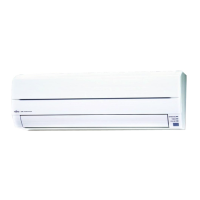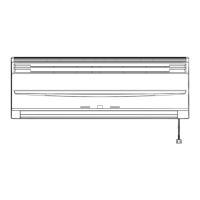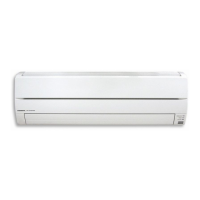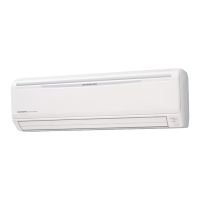What to do if my Fujitsu ASYA14LGC Air Conditioner has an indoor fan lock error?
- AaliandreaSep 12, 2025
If your Fujitsu Air Conditioner is displaying an indoor fan lock error, check the fan motor connector for looseness or defective contact.

What to do if my Fujitsu ASYA14LGC Air Conditioner has an indoor fan lock error?
If your Fujitsu Air Conditioner is displaying an indoor fan lock error, check the fan motor connector for looseness or defective contact.
What to do if my Fujitsu ASYA14LGC Air Conditioner has an indoor fan speed error?
If your Fujitsu Air Conditioner is showing an indoor fan speed error, check the fan motor connector for looseness or defective contact.
| Brand | Fujitsu |
|---|---|
| Model | ASYA14LGC |
| Category | Air Conditioner |
| Language | English |
Describes electrical characteristics and performance metrics of the unit.
Provides physical size and weight information for indoor and outdoor units.
Covers compressor type, refrigerant details, and charging specifications.
Illustrates the refrigerant flow within the air conditioning system.
Shows detailed wiring diagrams for indoor and outdoor unit electrical connections.
Explains basic operating modes, capacity control, and frequency limits.
Details fan speed settings and airflow direction adjustments.
Explains compressor frequency regulation and timer functions.
Covers auto restart, manual/forced operations, preheating, and coil dry.
Details defrosting, off-defrost, and various safety protections.
Lists specialized tools and equipment required for R410A refrigerant systems.
Covers essential safety and material guidelines for system installation.
Details important considerations for maintenance and repair procedures.
Compares R410A with other refrigerants like R407C and R22.
Highlights key differences and precautions when converting from R22 models.
Troubleshooting steps for when the unit shows no power indication.
Explains how to use the unit's error code system via indicator lights.
General methods including signal, IPM, and refrigerant cycle checks.
Specific diagnosis for communication failures between units.
Troubleshooting for inverter module protection faults.
Guides diagnosis of refrigerant circuit problems like leaks or EEV issues.
Details how to configure various operational settings via the remote control.
Instructions for configuring outdoor unit jumpers for specific functions.
Presents data graphs for outdoor unit pressure and current versus temperature.
Lists resistance data for indoor and outdoor unit thermistors at various temperatures.
Shows performance data tables for cooling and heating capacities.
Guides the selection of optimal locations for indoor and outdoor units.
Visual aids for proper unit setup, piping, and wiring connections.
Specific steps for installing unit covers and air intake components.
Procedure for safe refrigerant recovery during moves or disposal.
Crucial information on power supply, wiring, and safety precautions.
Detailed step-by-step instructions for setting up the indoor unit.
Detailed step-by-step instructions for setting up the outdoor unit.
Final checks, leak tests, and initial operational verification.











